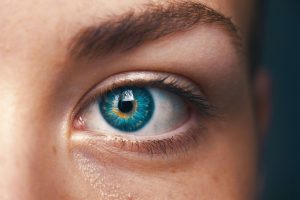The main difference to keep in mind is the following: UX design relates to the overall experience within a web page and the UI design focuses on how interfaces look and work of the product. In other words, the first is aimed at understanding how each client reacts, which options it chooses and whether or not to convert, while the second one is dedicated to optimizing the way the interface works.
However, they are not two separate tools, one from the other, both work coercively, both UI Design and UX Design are a fundamental part of web development. So its correct implementation can translate to a higher conversion rate.
UX design usually comes first in the product development process, followed by UI.. Along the way of any project, the UX designer traces the basic skeleton of the user experience, the order in which the texts, videos or images will appear, as well as Call To Actions that can translate into conversions; the user interface designer then fills it in with visual and interactive elements that the customer feels familiar with.
That said, a good UX design can be applied to any type of product, service or experience, no matter what it is; but the UI is specific to digital products and experiences. Have you noticed how many of the things you experience have been carefully planned for your comfort, not just on the internet but in general? We live surrounded by user experiences, both in the analogue and digital worlds, specially designed to attract your attention.
It is very rare that a product is not designed based on a study of what the customer expects, their desires and expectations, the way we search for information or our own perception of the world. UX/UI Design is the future, being that they are among the key points in the development of projects. For all this, it is important to understand their differences to implement them in the most optimal way.
Differences between UX Design and UI Design
Before continuing, it is important to differentiate between UX Design and UI Design, two disciplines that are often confused, probably because they work hand in hand, often overlapping, and because of the similarity of their acronyms. In this context, UI, or User Interface, refers to the creation of the interface, which can be visual or developed mainly with languages such as HTML, CSS or JavaScript.
The design choices made when creating an interface are critical to achieving simplicity, clarity, and customer friendliness. If the design of the website is confusing or difficult to read, it will not be an attractive answer for The UI designer is therefore primarily responsible for the visual aspect of the interface and for deciding the user journey.
For its part, UX Design, or User Experience, focuses on usability and how the user experience will be throughout the process, focusing on the analysis and the relationships it will have with your product, brand and/or website. All contact points between the user and the website are taken into account to ensure that the customer has a great time, fully satisfying their search and covering their needs.
Much of his work is focused on finding out what kind of problems and pain points users are facing and how a certain product could solve them. They will carry out extensive user research to find out who the target users are and what their needs are in relation to a certain product.
They will then map out the path a user might take through a product, considering things like information architecture, how content is organized and tagged in a product, and what kinds of features the user might need to have a successful experience. Eventually, create wireframes that lay out the basic blueprints for the product, that is, models in which they can better appreciate the final product.

With the skeleton of the product laid out, the user interface designer steps in to bring it to life. The UI designer considers all visual aspects of the user journey, including all individual screens and touch points the user may encounter; think about tapping a button, scrolling down a page, or scrolling through a gallery of images. Each of these possibilities requires its own decision-making that could be key to the customer's final decision.
While the UX Design charts the journey, the UI Designer focuses on all the details that make that journey as satisfying as possible. That's not to say that UI design isn't all about appearance, as this part of the job also has a big impact on whether or not a product is accessible and inclusive.
Hopefully, you are now starting to see how UX and UI design are two very different things. To sum up: UX design is about identifying and solving user problems when interacting with a product. and user interface design is all about creating intuitive, aesthetically pleasing, and interactive interfaces.
The UX designer focuses on ensuring that the navigation and actions performed by the user are consistent, managing the processes and actions triggered by the client. The professional in charge of the UI will focus on the design of the product, impacting the first visual impression of the user, while the person in charge of the UX will focus on usability and easy navigation, creating certain emotions and sensations when we use their page. website or app.

How do they work together?
So far we've explored the differences between UX Design and UI Design, now let's take a look at how they work together. Both are equally essential in the development of web pages or applications., to exemplify its relevance we can quote the designer and expert Helga Moreno, who expressed it quite eloquently in her article The Gap Between UX And UI Design:
“Something that looks great but is difficult to use is an example of a great user interface and a poor user experience. While something very useful that looks terrible is an example of a great user experience and a bad user interface.” In this way, each of these is necessary to offer the most attractive product to your customers.
As you can see, UX Design and UI Design go firmly hand in hand, and while there are millions of examples of great products with one and not the other, imagine how much more successful they could have been when they were strong in both fields. A perfect example is the way in which the Amazon Web Services page that Provides clearly and concisely the information that the user needs.
Imagine you come up with an amazing idea for an app; something that is clearly lacking in the market, it can be the perfect product for a lot of people and could really change people's lives for the better. You hire a UX designer to conduct user research to help you determine exactly what features your app should have and how the entire user journey should be mapped out.
Your app offers something that your target audience needs and wants; however, when they download it, they find the text on each screen to be barely legible (think yellow text on a white background). In addition, the buttons are too close to each other, it does not allow differentiation or hierarchy. This is a classic case of bad UI destroying what would have been a good UX.
On the other hand, have you ever come across a really beautiful website only to find that beyond the mind-blowing animations and accurate color scheme, it's actually a real pain in the ass? A good user interface can never make up for a bad user experience; it's like having a beautifully decorated cake that actually tastes awful when you bite into it.
Therefore, when it comes to product design, UX and UI complement each other, and in today's competitive marketplace, getting both aspects right is an absolute must. In Codster, we can be your ally in the development of applications with a perfect UX Design and UI Design to exploit the potential of your company, creating technological solutions for identity validation tailored to your needs. If you want to know more, do not hesitate to contact us.






